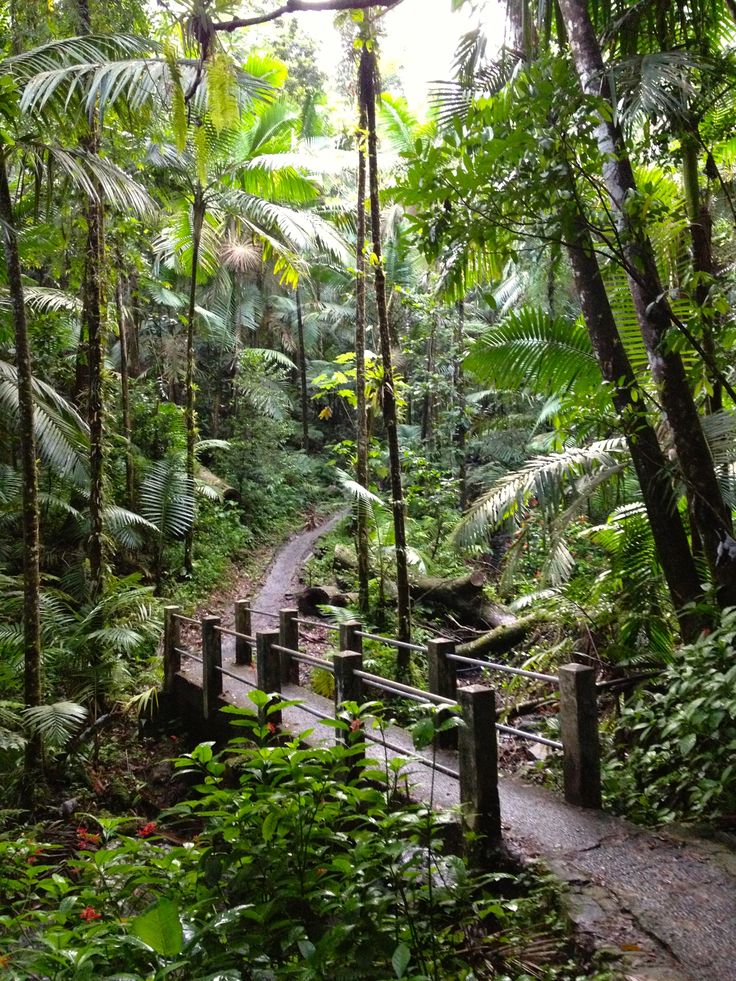Puerto rico rainforest: El Yunque National Forest – Home
10 Things to Know Before Visiting El Yunque Rainforest
Endangered Puerto Rican Parrot | © US Fish and Wildlife Service/flickr
Kris Pethick
16 January 2018
El Yunque on Puerto Rico’s east side is the only rainforest included in the US National Forest Service and it is known for its rare trees and birds. It is one of the smallest rainforests, but has a diverse habitat. As of January 2018 El Yunque is closed as it recovers from the massive damage sustained during Hurricane Maria, but you can continue to check their website and plan a trip as soon as it reopens. Here are some things to know before you go.
There are many waterfalls and rivers in the rainforest. On La Roca (The Rock) on the south side of the park there are Taino petroglyphs, some of which depict their god, Yikiyú, who they believed lived in the mountains of the rainforest. There are over 240 species of plants and trees in El Yunque.
Beautiful waterfall in El Yunque | © Ricardo Mangual/flickr
One of the most colorful birds is the little tody, which the locals call San Pedrito. Todies are often seen in El Yunque traveling in pairs, eating insects and chirping to each other. The Puerto Rican screech owl can also be found in the rainforest, and it is the only owl on Puerto Rico or the Virgin Islands.
Todies are often seen in El Yunque traveling in pairs, eating insects and chirping to each other. The Puerto Rican screech owl can also be found in the rainforest, and it is the only owl on Puerto Rico or the Virgin Islands.
Perhaps the most stunning bird of El Yunque is the Puerto Rican parrot, but it is also one of the saddest stories. At the time of the first Spanish colony in the early 1600s, there were believed to be a million parrots on the island, but over the years, as human population increased and deforestation occurred, the numbers dropped drastically until in 1973 there were only 13 iguacas, the Taino word for the parrot. The Puerto Rican Parrot Recovery Program was making great strides to renew the population and at last count, before Hurricanes Irma and Maria, there were almost 60 parrots in the wild.
After Irma, Marisel Lopez and other scientists did a count and found 31, but after the stronger and much more devastating Maria, Lopez and others were first unable to find any of the wild parrots. Many people are helping in the search and reporting sightings to the scientists, as well as posting them on Facebook, so the hope is that some of the flock have just moved to find better shelter and food and will return. Unfortunately some of the parrots were located through the transmitters they wore and were found dead.
Many people are helping in the search and reporting sightings to the scientists, as well as posting them on Facebook, so the hope is that some of the flock have just moved to find better shelter and food and will return. Unfortunately some of the parrots were located through the transmitters they wore and were found dead.
Narrow-billed tody | © Ron Knight/flickr
The island was created during the Triassic period as a result of volcanic activity, so any wildlife on the island had to swim, fly, or float here. As a result, the only mammal native to Puerto Rico is the bat. In El Yunque you may also see rats and mongoose, the rats brought here on ships as an inherent part of sailing, and the small Indian mongoose imported in 1877 in an attempt to control those very rats in the sugar cane fields.
The real wealth of wildlife is the many reptiles and amphibians. The trees are abundant with coquí, you may also see worm lizards, Puerto Rican boa (although all snakes in El Yunque are very timid and rarely seen), galliwasps, skinks, and so much more.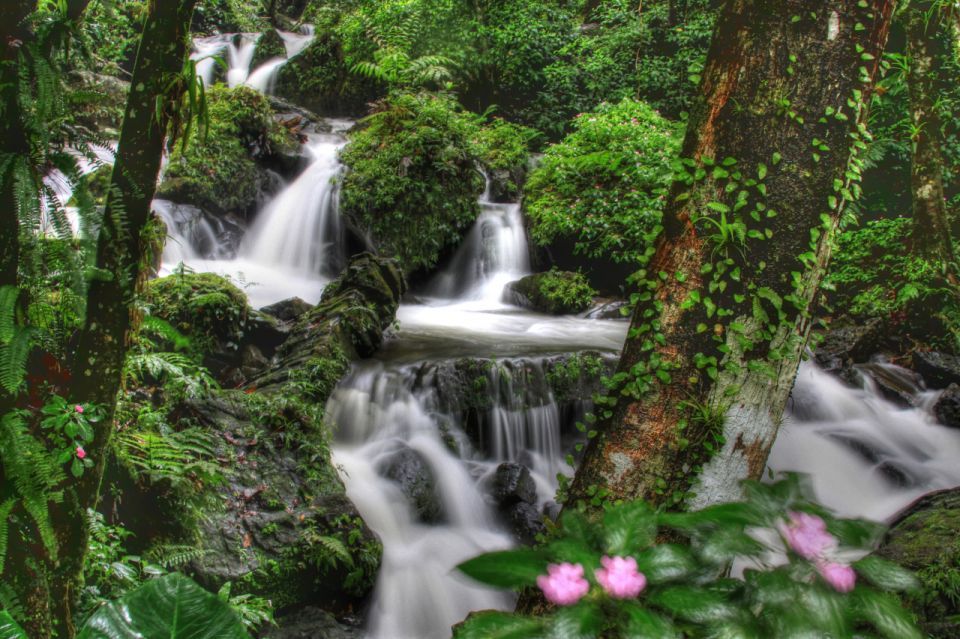
Fauna of El Yunque | © Todd Van Hoosear/flickr
While it may seem odd, the US Forest Service gets this question often, and the answer is technically no, but they explain what happens to make it seem as if it is raining coquí. They explain this on their website: “This interesting forest legend involving Puerto Rico’s indigenous coquí frog (Eleutherodactylus coquí) is actually based on scientific fact. During those times of the year when the humidity is high, the tiny coquí frogs will climb to the forest canopy, sometimes as high as 100 feet (30 meters). Predators such as the tarantula, anticipating this behavior, lay in wait for the frogs. Many frogs are caught by the predators during their ascent. Instead of returning to the ground by the same dangerous path, the surviving frogs prefer to launch themselves into the air, thus bypassing their predators on the way down. The tiny frogs are almost weightless so that they float to the forest floor unharmed. If you are lucky enough to be sitting under a tree when this is happening, you will indeed be rained upon by tiny frogs!”
Coquí | © US Fish and Wildlife Service/flickr
At the highest points of the mountains, the constant cloud cover and rain make it difficult for plants and trees to take root because the soil is so wet, so the plants seem to grow miniaturized versions of themselves.
The prism of color in El Yunque | © schizoform/flickr
While it would seem that the wet environment would result in a prolific mosquito population, the water in El Yunque is constantly running down the mountain and rapidly, and it rains about four times a day preventing any standing water, so there are no mosquitoes in the rainforest. You can wear insect repellent if you choose, but if so DO NOT go into any water sources. The chemicals in bug spray are hazardous to the fragile ecosystem. Perhaps just cover with long pants and long-sleeved shirts instead of using repellent.
Spend a day at El Yunque | © Todd VanHoosear/flickr
There are many well-maintained hiking trails. There are 16 different hiking areas, so you could easily explore for a few days. El Yunque Trail begins at the visitors center and takes you up the mountain, where at the end of the trail you can explore the dwarf forest. Mt Britton trail takes you to the stone tower made by the CCC (Civilian Conservation Corps) in the 1930s, which you can climb up and see for miles.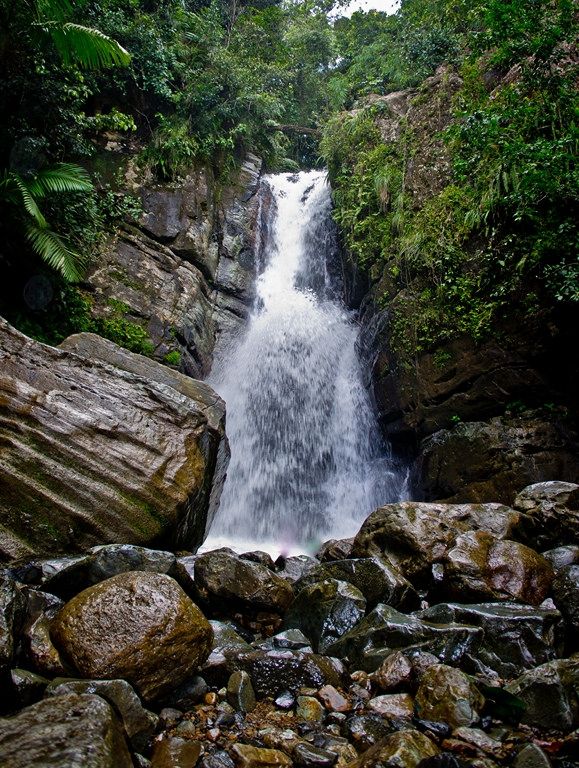 The most popular trail is La Mina, which follows the river by the same name through the lush foliage and crosses the water in several places. La Mina is less than a mile, but is rated as challenging due to steep curving steps. Certain trails will take you up as far as 3,000 feet.
The most popular trail is La Mina, which follows the river by the same name through the lush foliage and crosses the water in several places. La Mina is less than a mile, but is rated as challenging due to steep curving steps. Certain trails will take you up as far as 3,000 feet.
La Mina Falls, El Yunque | © BluEyedA73/flickr
The truly adventurous spirit may want to have a 24-hour experience in El Yunque and set up camp. A permit must be obtained a minimum of two weeks in advance, and it is very rustic camping. You must bring all necessary supplies and equipment, and make sure everything gets hauled back out with you. Being able to share stories of the night sounds and activities will be a treasure you will hold forever.
It is quite a bit cooler in the rainforest, so it is best to wear long pants and a long-sleeved shirt. This also helps with any insects there may be, and there are some plants that could potentially cause irritation if they come in contact with skin. It is also very important to remember, IT RAINS EVERY DAY in El Yunque, about four times a day, so bring rain gear. A poncho can easily be stored in a backpack. Also make sure you wear comfortable sturdy shoes with good traction. Hiking trails are groomed, but there are some areas of mud and the stone can be slippery at times.
A poncho can easily be stored in a backpack. Also make sure you wear comfortable sturdy shoes with good traction. Hiking trails are groomed, but there are some areas of mud and the stone can be slippery at times.
Yokahu Tower in El Yunque | © vxia/flickr
There is no lodging within El Yunque, but there are a number of hotels, resorts and vacation rentals nearby. It is only about a 40-minute drive from San Juan to the entrance of the park, so you can make it a day trip.
Fore more information, you can contact the US Forest Service at +1 787 888 1810 or +1 787 888 1880 or visit the El Yunque website.
Since you are here, we would like to share our vision for the future of travel – and the direction Culture Trip is moving in.
Culture Trip launched in 2011 with a simple yet passionate mission: to inspire people to go beyond their boundaries and experience what makes a place, its people and its culture special and meaningful — and this is still in our DNA today.
 We are proud that, for more than a decade, millions like you have trusted our award-winning recommendations by people who deeply understand what makes certain places and communities so special.
We are proud that, for more than a decade, millions like you have trusted our award-winning recommendations by people who deeply understand what makes certain places and communities so special.
Increasingly we believe the world needs more meaningful, real-life connections between curious travellers keen to explore the world in a more responsible way. That is why we have intensively curated a collection of premium small-group trips as an invitation to meet and connect with new, like-minded people for once-in-a-lifetime experiences in three categories: Epic Trips, Mini Trips and Sailing Trips. Our Trips are suitable for both solo travellers and friends who want to explore the world together.
Epic Trips are deeply immersive 8 to 16 days itineraries, that combine authentic local experiences, exciting activities and enough down time to really relax and soak it all in. Our Mini Trips are small and mighty – they squeeze all the excitement and authenticity of our longer Epic Trips into a manageable 3-5 day window.
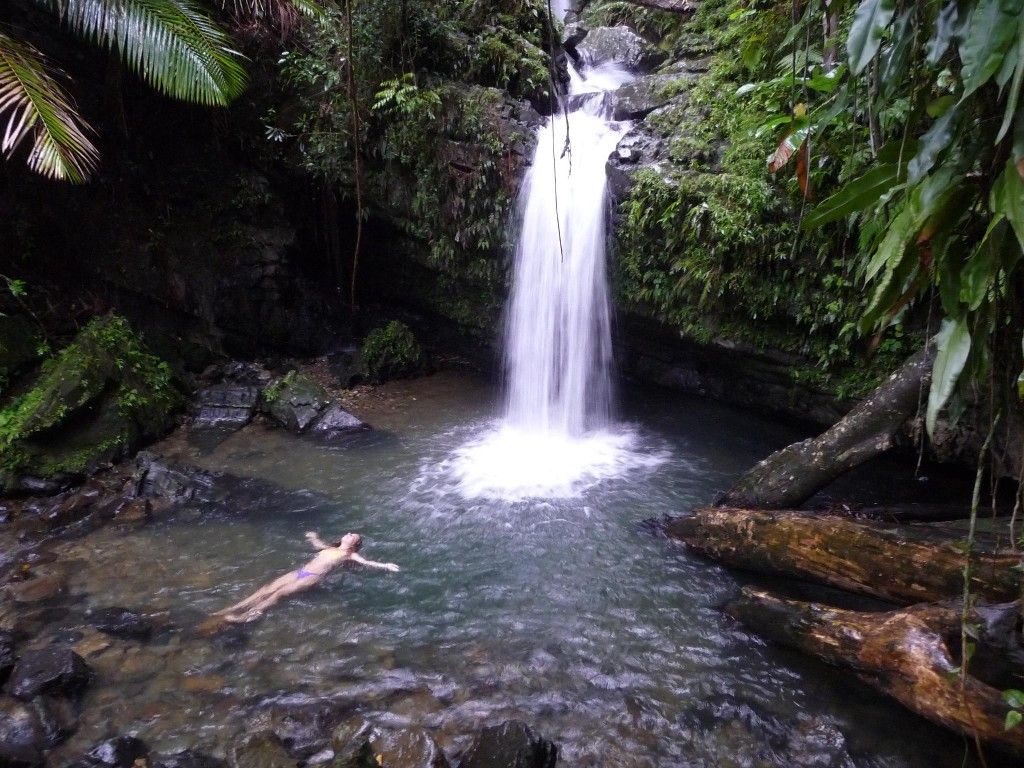 Our Sailing Trips invite you to spend a week experiencing the best of the sea and land in the Caribbean and the Mediterranean.
Our Sailing Trips invite you to spend a week experiencing the best of the sea and land in the Caribbean and the Mediterranean.
We know that many of you worry about the environmental impact of travel and are looking for ways of expanding horizons in ways that do minimal harm – and may even bring benefits. We are committed to go as far as possible in curating our trips with care for the planet. That is why all of our trips are flightless in destination, fully carbon offset – and we have ambitious plans to be net zero in the very near future.
Tours & Tickets – El Yunque National Park – Book Now
- Overview
- Tours & Tickets
Tours and Tickets to Experience El Yunque National Park
Nature and Wildlife Tours
Sightseeing Tours
Adventure Tours
Day Trips
Walking Tours
Hiking Tours
On the Water
Swimming
Bus Tours
Nature Walks
Specials
Deals & Discounts
Free Cancellation
Likely to Sell Out
Skip-The-Line
Private Tour
Viator Exclusive
New on Viator
Filters
People Also Ask
Can you go to El Yunque without a reservation?
No, you can’t go to El Yunque National Forest’s main recreation area without a reservation. If you’re wanting to go to the main recreation area on Road 191 North in Rio Grande, you’ll have to plan ahead and book your reservations online. If you show up without one, you’ll be turned away.
If you’re wanting to go to the main recreation area on Road 191 North in Rio Grande, you’ll have to plan ahead and book your reservations online. If you show up without one, you’ll be turned away.
…More
Can you swim in El Yunque?
Yes, you can swim in El Yunque, and the national forest even has more than five designated swimming areas for visitors to enjoy. Check the weather forecast on the day you’re planning to go swimming as flash flooding can occur with little warning.
…More
What should I wear to El Yunque?
You should wear clothing that’s comfortable to explore in as you’ll be walking and hiking around. Pick out a pair of shoes with good grip because if the weather is bad or the trails are wet, things can get slippery.
…More
How long does it take to hike El Yunque?
If you’re hiking El Yunque Trail, keep in mind it will take you about an hour to complete. This trail is one the national forest’s most strenuous hikes, with 2.5 miles (4 kilometers) of paved and gravel paths. The forest’s easiest trail to walk is the Caimitillo Trail.
This trail is one the national forest’s most strenuous hikes, with 2.5 miles (4 kilometers) of paved and gravel paths. The forest’s easiest trail to walk is the Caimitillo Trail.
…More
Can you drive through El Yunque?
No, driving through the rain forest isn’t possible as all the trails within the forest are walking or hiking trails only and cars aren’t allowed. You can take road 191 up to the rain forest by car, but parking is limited within the El Yunque National Forest.
…More
Do I need hiking shoes for El Yunque?
No, you don’t necessarily need hiking boots for a visit to El Yunque, but you’ll still want to wear some sort of hiking shoes or athletic running or walking shoes like sneakers. You could also wear hiking sandals if you don’t mind your feet getting dirty.
…More
Frequently Asked Questions
The answers provided below are based on answers previously given by the tour provider to customers’ questions.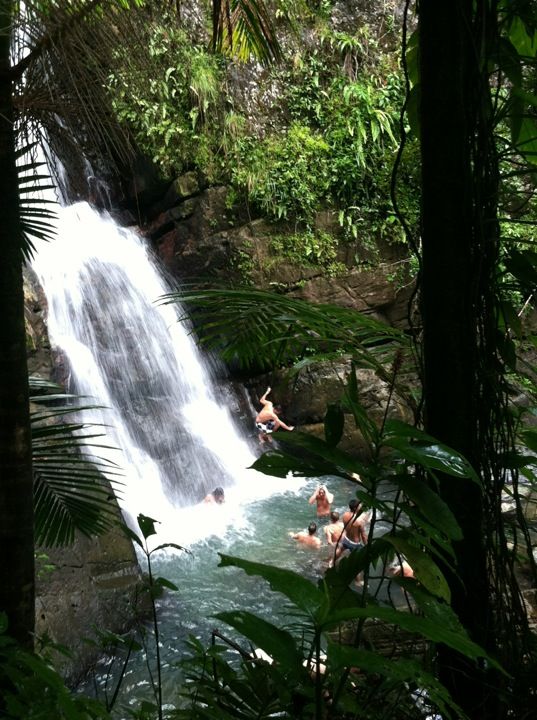
Q:
What’s the best way to experience El Yunque National Park?
More Tours in San Juan
- Art & Culture
- Audio Guides
- Classes & Workshops
- Food & Drink
- Likely To Sell Out
- Outdoor Activities
- Seasonal & Special Occasions
- Tickets & Passes
- Tours, Sightseeing & Cruises
- Travel & Transportation Services
- Unique Experiences
More attractions near San Juan
- Luquillo Beach
- Laguna Grande
- Icacos Island (Cayo Icacos)
- Palomino Island
- Caguas
- Pine Grove Beach
- Mercado de Río Piedras
- Museum of History, Anthropology and Art (Museo de Historia, Antropología y Arte)
- La Calle Loiza
- Museum of Art of Puerto Rico (Museo de Arte de Puerto Rico)
- Luis A. Ferré Performing Arts Center (Centro de Bellas Artes Luis A. Ferré)
- San Juan Bay
- Fine Arts Miramar
- Old San Juan Piers
- Castillo San Cristobal
Trending attractions
- Hoover Dam
- Molokini Crater
- Colosseum
- Eiffel Tower
- Statue of Liberty
- Na Pali Coast
- Burj Khalifa
- Tulum
- Road to Hana (Hana Highway)
- Las Vegas Strip
- French Quarter
- Alcatraz
- River Seine
- Sagrada Familia
- Blue Lagoon
Rainforests are adapted to hurricanes, but climate change could wipe them out
When Hurricane Maria hit Puerto Rico in September 2017, the island’s forests were a pitiful sight of split tree trunks, fallen branches and leaves.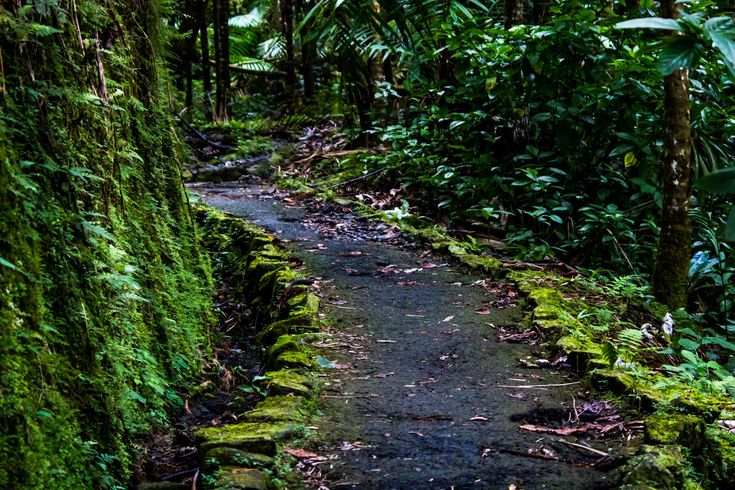 Particularly hard hit was the El Yunque Tropical National Forest, covering more than 110 square kilometers, located in northeastern Puerto Rico. It is known for its pristine beauty and high biodiversity. The winds that hit it at speeds up to 250 kilometers per hour left behind only leafless, partially damaged tree trunks. Four years later, the rainforest still contains clear signs of a major storm. But the ecosystem is gradually recovering. Scientists from the US Forest Service, as well as NASA and some other organizations, are actively studying this process. For researchers, the observations allow us to figure out how forests will change in the near future, when hurricanes as a result of global warming become more powerful and similar to the recent hurricane Ida. Most of all, scientists are interested in the question – does global warming threaten the complete destruction of tropical forests, which are generally adapted to hurricanes.
Particularly hard hit was the El Yunque Tropical National Forest, covering more than 110 square kilometers, located in northeastern Puerto Rico. It is known for its pristine beauty and high biodiversity. The winds that hit it at speeds up to 250 kilometers per hour left behind only leafless, partially damaged tree trunks. Four years later, the rainforest still contains clear signs of a major storm. But the ecosystem is gradually recovering. Scientists from the US Forest Service, as well as NASA and some other organizations, are actively studying this process. For researchers, the observations allow us to figure out how forests will change in the near future, when hurricanes as a result of global warming become more powerful and similar to the recent hurricane Ida. Most of all, scientists are interested in the question – does global warming threaten the complete destruction of tropical forests, which are generally adapted to hurricanes.
El Yunque Reserve, four years after Hurricane Maria, begins to recover
How the rainforest recovers from Hurricane
To understand the damage to the forest caused by Hurricane Maria, the strongest since 1928, scientists studied it from a bird’s eye view. In addition to aerial photography, they used LIDAR, that is, a laser rangefinder, as well as other tools that made it possible to create a three-dimensional map and indicate the composition of the ecosystem on it.
In addition to aerial photography, they used LIDAR, that is, a laser rangefinder, as well as other tools that made it possible to create a three-dimensional map and indicate the composition of the ecosystem on it.
The damage was more severe than expected. What used to be rainforest with a continuous closed canopy has turned into a “patchwork quilt” of separate fragments of closed forest and open areas. The rainforest has become more like a savannah ecosystem, the researchers say. But, most importantly, it has become much lower. On average, according to scientists, the forest lost 7 meters in height. We can say that a powerful hurricane “trimmed” El Yunque.
Hurricane Maria, which hit Puerto Rico in 2017, was the worst since 1928 the most destructive to the forest on record.
At the same time, the researchers found that not all types of tropical forests suffered the same destruction. Many large hardwoods that grew on low elevations were broken in half as a result of the storm. At the same time, low palm trees, which grow mainly in the high parts of the forests of El Yunque, endured the hurricane quite well. As the researchers note, their trunks are able to bend rather than break in strong winds.
At the same time, low palm trees, which grow mainly in the high parts of the forests of El Yunque, endured the hurricane quite well. As the researchers note, their trunks are able to bend rather than break in strong winds.
More information about the most exciting and unexpected scientific observations you will find on our Telegram channel
Six months after the hurricane, many grasses, shrubs and sprouts of the tropical tree Cecropia began to actively grow and recover, taking advantage of the sunlight that was no longer obstructed crowns of trees. As the scientists say, these “pioneers” will be pushed out later as the forest ecosystem continues to recover, causing the canopy to close. But, in any case, the latest data shows that El Yunque’s recovery is going faster than scientists expected.
Rainforest recovers unevenly after a hurricane, which is a mystery to scientists
Rainforest recovers unevenly
Scientists in 2020 repeated aerial photography and survey of damaged forest. These data were recently published in the journal Springer Nature. As it turns out, about two-thirds of the forested areas that lost height during Hurricane Maria quickly regained it between 2018 and 2020, which is to be expected from hurricane-adapted forests. However, almost a third of the forest areas have not grown at all since then. According to scientists, it was an unexpected find that surprised them.
These data were recently published in the journal Springer Nature. As it turns out, about two-thirds of the forested areas that lost height during Hurricane Maria quickly regained it between 2018 and 2020, which is to be expected from hurricane-adapted forests. However, almost a third of the forest areas have not grown at all since then. According to scientists, it was an unexpected find that surprised them.
It is possible that some areas of the forest have been damaged to such an extent that the trees can no longer grow quickly. It is also possible that for some reason, instead of wasting energy on growing, these trees are investing more resources in restoring their root system. But why this happens remains a mystery to scientists. This process does not appear to be related to specific tree species or topographical features of the area or other factors that often affect reforestation in El Yunque.
Global warming will change the rainforests
In the last 30 years, El Yunque has experienced three major hurricanes, ie Category 3 and above.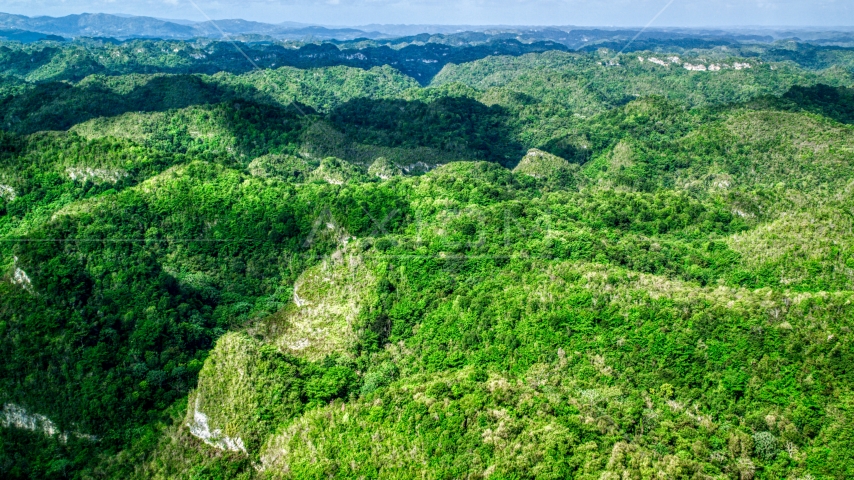 Storms of this intensity have occurred about every 50 years. But over the past three decades, the situation has worsened. As a result, the changes that are happening now in El Yunque are suggesting to scientists what could happen to all the rainforests on the planet in the future.
Storms of this intensity have occurred about every 50 years. But over the past three decades, the situation has worsened. As a result, the changes that are happening now in El Yunque are suggesting to scientists what could happen to all the rainforests on the planet in the future.
Over the past 30 years, the number of palm trees has increased in the reserve
Scientists note that the number of palms in El Yunque has recently increased. If the forest is hit by such storms about every ten years, the palms will begin to dominate the trees, causing the forest to become lower and absorb less carbon.
Such a forest may be more resistant to strong hurricanes, since the palm trees are not prone to break in strong winds. But other anticipated impacts of climate change, such as increased droughts, will also affect palm trees. Unlike trees, they cannot survive in conditions of lack of moisture.
Materials about global warming that were not published on the site, you can read on our Yandex. Zen channel will turn into completely different ecosystems with a predominance of shrubs that tolerate hurricanes and droughts well. Finally, let me remind you that climate warming threatens not only the nature of the earth, but also human health, as I have already talked about.
Zen channel will turn into completely different ecosystems with a predominance of shrubs that tolerate hurricanes and droughts well. Finally, let me remind you that climate warming threatens not only the nature of the earth, but also human health, as I have already talked about.
Global warmingNature of the EarthNatural phenomena
To send a comment, you must either
tropical forests, white sand beaches, mysterious caves and other tourist attractions
From Masterweb
11/18/2019 23:42
Puerto Rico is one of the best vacation spots on the planet. Incredibly beautiful pristine nature, untouched by human hand, clear waters of the Pacific Ocean, warm sandy beaches, diving and many other entertainments can surprise any tourist. On a small island, there are a lot of places where you can go and have fun. But in this article we will look at 10 of the most popular and interesting ones.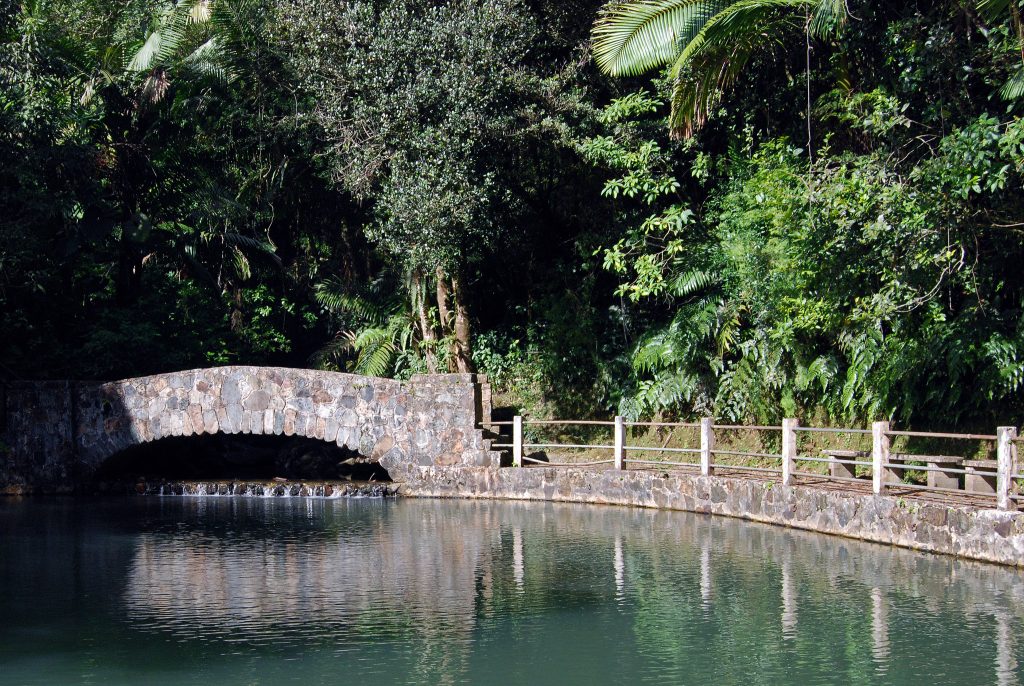
Playa Tortuga
This beach is one of the cleanest in the world. It is located on the small island of Culebra, located 27 kilometers from Puerto Rico. Therefore, if you decide to spend your vacation in this country, then you should definitely visit it. You can get to Playa Tortuga by water taxi for just a few dollars or by renting a private boat. The main tourist attraction of Culebra is the old lighthouse. But its main advantage is that there are practically no people here. Arriving here, you can not only sunbathe on the white sand, but also fully enjoy the silence and solitude.
El Yunque
Always dreamed of visiting the rainforest, but never got the chance? Then come to Puerto Rico and go to El Yunque. This is a conservation area located near the Rio Grande. The nature of these places has been preserved the same as it was several thousand years ago, and its beauty is truly amazing. There are several hiking trails in the national forest, which you can walk on your own or as part of a group accompanied by an experienced guide.
Reises Fountain
If you want to spend an unforgettable romantic evening with your loved one, then Puerto Rico has one unique place for you. In Old San Juan there is a fountain "Rayses". Come here shortly before sunset - and you are guaranteed an unforgettable experience. Also in the evenings, street shops selling a wide variety of goods open here. And if you climb the ancient city wall, you will have a beautiful view of the San Juan Bay. It is especially beautiful at night when the moon and stars are reflected in it.
Kamui Rivers
This is a huge park consisting of many caves connected by a network of underground tunnels. It is located near the small town of Quebrada. There are many tourist excursions in the Kamui River, which include not only sightseeing of local attractions, but also a whole lecture on speleology. Therefore, if you are interested in nature, then be sure to come here. Similar places located all over the world can be counted on the fingers of one hand.
Arecibo Observatory
Do you want not only to have fun, but also to spend your time usefully and discover something new? Then, having arrived in Puerto Rico, go to the city of Arecibo. There is an observatory with the world's largest radio telescope. Its dimensions are simply amazing. The building occupies about 20 acres of land. Tourist excursions are held here daily, during which everyone can look at the stars through a powerful telescope.
Mosquito Bay
There is probably nothing better than this in all of Puerto Rico. "Why?" - you ask. The local waters are inhabited by plankton, which begin to glow at night, creating a real light show in the water. Microorganisms are completely safe, so you can safely swim in the water. Mosquito Bay is the brightest bay in the world, so it certainly deserves attention.
Rincón Lighthouse
By itself, it has no historical or architectural value. However, many tourists recommend coming here not for the sake of the building.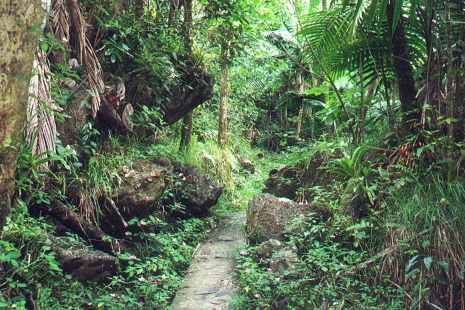 Humpback whales migrate off the west coast of Puerto Rico every winter and can be seen from Rincón Lighthouse. The best time for this is the period from December to March. Majestic mammals periodically rise to the surface to replenish air supplies. At this very moment, you can look at them.
Humpback whales migrate off the west coast of Puerto Rico every winter and can be seen from Rincón Lighthouse. The best time for this is the period from December to March. Majestic mammals periodically rise to the surface to replenish air supplies. At this very moment, you can look at them.
El Morro Fort
This ancient fortification is over 400 years old and is located near San Juan. Fort El Morro has repeatedly taken part in the defense of the city from pirates and other invaders. It will be difficult to get to it on your own, so it is best to hire an experienced guide. He will not only show the most interesting places, but also tell about their history. And if you are fond of mysticism, then come to the fort at night. It is said that after sunset, the ghosts of the fallen defenders begin to roam around it. True or not, you have to find out.
Campamento Piñones
This small town is ideal for a relaxing and measured holiday. In it you can get acquainted with the culture and way of life of the local population. There are many shops, bars and eateries in Campamento Piñones, so no one will be bored. Also nearby is a small but very clean beach. And don't forget to try the local dishes. Cuisine in Puerto Rico is very simple, but at the same time incredibly tasty and colorful.
There are many shops, bars and eateries in Campamento Piñones, so no one will be bored. Also nearby is a small but very clean beach. And don't forget to try the local dishes. Cuisine in Puerto Rico is very simple, but at the same time incredibly tasty and colorful.
Ponce Carnival
Tired of boring time on the beach and meaningless wanderings through the streets and shops? Then take part in the carnival "Pons". It has been held annually in February for more than 100 years. This event has not only cultural but also religious significance for Puerto Ricans. The central object of the holiday is the demon Vejigante, who was expelled from the island in ancient times. A special actor puts on his costume and walks around among the crowd of onlookers, performing ritual dances. Undoubtedly, "Pons" is inferior in scale to the carnival in Rio de Janeiro and Mardi Gras, but it will be no less interesting and fun.
These are just a few of the places and things to do when visiting Puerto Rico.